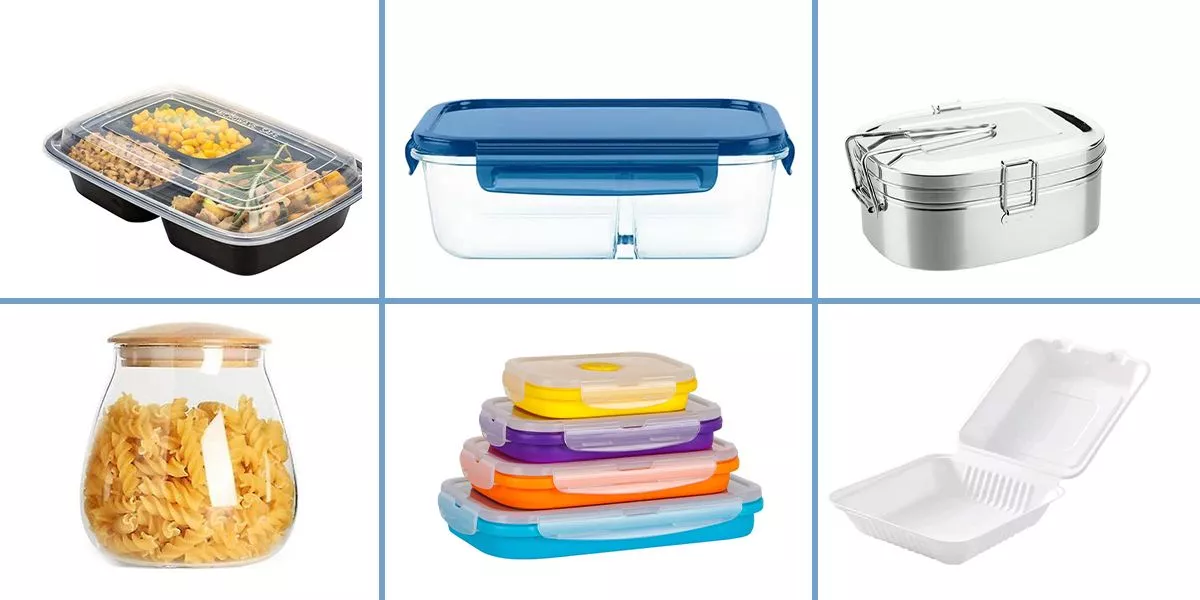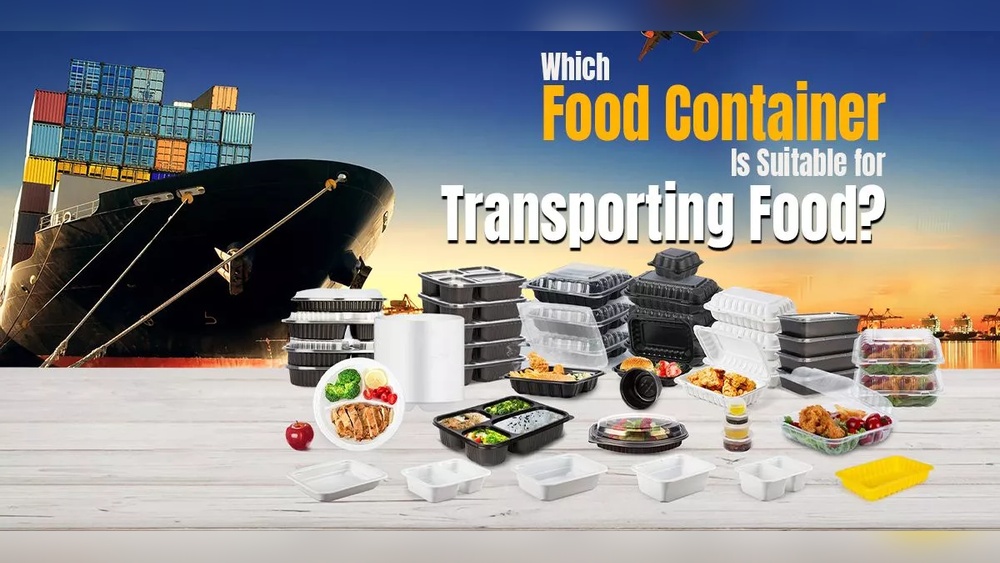Are you wondering which food container is best for safely transporting your meals? Choosing the right container is not just about convenience—it’s about keeping your food fresh and safe from harmful bacteria.
Whether you’re packing a lunch, delivering meals, or catering an event, following ServSafe guidelines ensures your food stays at the right temperature and free from contamination. You’ll discover the types of containers that protect your food during transport, helping you avoid common mistakes that can lead to foodborne illnesses.
Keep reading to learn exactly what container suits your needs and how to use it the right way. Your food’s safety depends on it!

Credit: www.thecustommylarbags.com
Food Container Types
Choosing the right food container matters for safe food transport. Different containers offer various benefits. Some keep food hot, others cold. Some prevent spills and contamination better. Understanding container types helps keep food fresh and safe.
Food containers must follow ServSafe guidelines. This ensures food stays at safe temperatures. It also prevents bacteria growth and foodborne illnesses. Let’s explore common container types used for food transport.
Plastic Containers
Plastic containers are lightweight and easy to carry. They often come with tight-fitting lids. This helps prevent spills and contamination. Many plastic containers are microwave safe. Choose BPA-free plastics for food safety. They work well for cold and room temperature foods. However, avoid using plastic for very hot foods. It can melt or release harmful chemicals.
Glass Containers
Glass containers are durable and non-reactive. They do not absorb odors or stains. Glass keeps food fresh and safe from chemicals. These containers are easy to clean and sanitize. They handle hot and cold foods well. Glass containers often have secure lids to prevent leaks. They are heavier than plastic, so consider weight for transport.
Stainless Steel Containers
Stainless steel containers are strong and long-lasting. They resist rust and corrosion. These containers are great for hot foods. Stainless steel maintains temperature well. They are easy to clean and sanitize. Many come with insulated designs for better temperature control. Stainless steel containers do not stain or absorb flavors. They are perfect for heavy-duty food transport.

Credit: www.thecustommylarbags.com
Containers For Temperature Control
Maintaining the right temperature during food transport is vital for safety. Containers designed for temperature control help keep food hot or cold. They reduce the risk of foodborne illnesses by preventing temperature abuse. Choosing the correct container ensures food stays fresh and safe until served.
Insulated Containers
Insulated containers keep hot foods hot and cold foods cold. They have thick walls that trap heat or cold inside. Preheating or precooling these containers improves their performance. They are perfect for soups, stews, and hot meals. Sealing the container tightly avoids heat or cold loss during transport.
Coolers And Thermal Bags
Coolers and thermal bags keep perishable foods cold during transport. They use ice packs or frozen gel packs to maintain low temperatures. These containers prevent bacteria growth by keeping food below 41°F (5°C). They are lightweight and easy to carry. Ideal for dairy, meats, and salads.
Plastic-coated Produce Boxes
Plastic-coated produce boxes offer sturdy protection and temperature control. Their heavy coating resists moisture and helps keep food cool. A tight-fitting lid prevents contamination and temperature changes. These boxes are best for transporting time/temperature control for safety (TCS) foods. They meet ServSafe guidelines for safe food transport.
Choosing Containers For Tcs Foods
Choosing the right containers for TCS (Time/Temperature Control for Safety) foods is vital for food safety. These foods need careful handling to avoid bacteria growth. Containers must keep food at safe temperatures and protect from contamination. This section explains how to pick containers that meet these needs.
Maintaining Safe Temperatures
Containers for TCS foods must keep hot foods hot and cold foods cold. Use insulated containers that hold temperature well. Preheat or pre-chill containers before adding food. This helps keep food in the safe zone. Avoid containers that lose heat or cold quickly.
Preventing Contamination
Containers should be easy to clean and made of food-safe materials. Choose containers with tight-fitting lids to stop dirt and germs. Avoid containers with cracks or damage where bacteria can hide. Use separate containers for raw and cooked foods to prevent cross-contamination.
Sealing And Covering Methods
Use lids that seal tightly to keep air and moisture out. Wrap containers with plastic wrap or foil if lids are not available. Check that seals do not leak during transport. Proper covering keeps food safe and fresh until served.
Preparing Containers For Transport
Preparing containers for food transport ensures meals stay safe and fresh. Proper preparation keeps hot foods hot and cold foods cold. It also prevents spills and contamination during delivery. Following simple steps improves food safety and customer satisfaction.
Preheating Insulated Containers
Preheating insulated containers helps keep hot food at safe temperatures. Fill the container with hot water and let it sit for a few minutes. Empty the water before adding the hot food. This warms the container, reducing heat loss during transport.
Using Ice Packs Or Cooling Agents
Ice packs or cooling agents maintain cold food temperatures during transport. Place ice packs at the bottom and sides of the container. Avoid direct contact between ice and food to prevent sogginess. This method helps keep perishable items fresh and safe.
Proper Sealing Techniques
Sealing food containers tightly prevents spills and contamination. Use lids that fit securely and close all edges firmly. Wrap containers with plastic wrap or use food-grade tape if needed. Proper sealing keeps food protected and maintains temperature control.
Material Safety Considerations
Choosing the right material for food containers matters a lot for safe food transport. Material safety affects food quality and health. Containers should not release harmful chemicals or break down under heat. This section explains key points about material safety.
Bpa-free And Food-grade Materials
BPA is a chemical found in some plastics. It can leak into food and harm health. Always choose BPA-free containers for food storage and transport.
Food-grade materials meet safety standards. They do not react with food or release toxins. Common food-grade materials include certain plastics, glass, and stainless steel.
Microwave And Oven Safety
Some containers are safe for microwave use. These containers do not melt or release chemicals under heat. Check labels for microwave-safe symbols before use.
Oven-safe containers withstand high temperatures without damage. Glass and metal containers often work well in ovens. Avoid plastic containers in ovens unless specified safe.
Durability And Weight Factors
Durable containers resist cracks and leaks during transport. Strong containers protect food and prevent spills. Heavy containers may be hard to carry but last longer.
Lightweight containers are easy to handle and save space. Plastic containers are usually light but vary in strength. Balance weight and durability based on your needs.

Credit: www.instantcustomboxes.com
Common Mistakes To Avoid
Avoiding mistakes during food transport ensures safety and quality. Many people overlook small details that lead to contamination or spoilage. Understanding common errors helps in choosing the right containers. This section highlights typical pitfalls to avoid for safe food handling.
Using Inadequate Covers
Covers protect food from dirt and germs during transport. Using loose or no covers exposes food to contamination. Always use tight-fitting lids or sealed wraps. This prevents spills and keeps food fresh. Avoid covers that easily slip off or tear.
Ignoring Temperature Requirements
Maintaining proper temperature is critical for food safety. Hot food must stay hot, cold food must remain cold. Ignoring this leads to harmful bacteria growth. Use insulated containers or coolers to control temperature. Check food temperatures before and after transport.
Choosing Unsuitable Container Materials
Not all containers are safe for every type of food. Some plastics can leach chemicals into food. Metal containers may react with acidic foods. Avoid porous materials that absorb moisture or odors. Select containers made from food-grade, non-toxic materials only.
Frequently Asked Questions
Which Food Container Is Suitable For Transporting Food?
Use insulated containers, coolers, or thermal bags to keep food at safe temperatures during transport. Choose BPA-free plastic, glass, or stainless steel containers with tight lids to prevent contamination and maintain freshness. These options ensure food safety and comply with ServSafe guidelines.
Which Food Container Is Suitable For Transporting Time Temperature Control For Food Safety?
Use insulated containers or heavy, plastic-coated boxes with tight-fitting lids to safely transport time-temperature control (TCS) foods. These containers maintain proper temperatures and prevent contamination during transport.
What Are The Requirements For Containers Used To Transport Food Servsafe?
Use insulated containers, coolers, or thermal bags to maintain safe temperatures. Choose BPA-free plastic, glass, or stainless steel with secure lids. These prevent contamination and keep food safe during transport as per ServSafe guidelines.
What Type Of Container Should Be Used To Transport Food Off Site?
Use insulated containers, coolers, or thermal bags to maintain safe temperatures and prevent contamination during food transport. Choose BPA-free, airtight containers for general use. Ensure containers have secure lids to protect food and comply with ServSafe guidelines for safe off-site food handling.
Conclusion
Choosing the right food container ensures safe food transport. Use insulated containers for hot or cold foods. Coolers work well for perishable items. Covers prevent contamination and keep temperatures stable. Follow ServSafe guidelines to avoid foodborne illness risks. Proper containers protect food quality during travel.
Safe food handling starts with the right equipment. Keep food fresh, safe, and ready to serve. Always check container seals before transporting. Safety matters in every step of food delivery.

